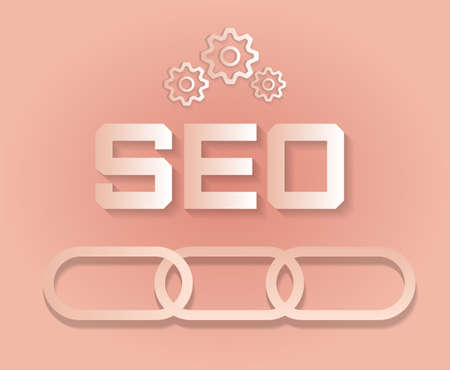Understanding White Hat and Black Hat SEO
When it comes to search engine optimization (SEO), there are two main strategies you’ll hear about: White Hat SEO and Black Hat SEO. These terms refer to the techniques used to improve a websites ranking on search engines like Google. While both aim to boost visibility, they go about it in very different ways—and the long-term results can be drastically different.
What is White Hat SEO?
White Hat SEO refers to ethical, Google-approved strategies that focus on providing real value to users. This approach follows search engine guidelines and aims for long-term success by improving user experience and building trust with both users and search engines.
Key Principles of White Hat SEO:
- Creating high-quality, relevant content
- Using descriptive and keyword-rich meta tags
- Improving site speed and mobile-friendliness
- Earning backlinks naturally through valuable content
- Making websites easy to navigate for users and bots
This method takes time but builds a solid foundation that can lead to sustainable traffic and rankings.
What is Black Hat SEO?
Black Hat SEO involves tactics that try to trick search engines into ranking a site higher. These methods often violate Google’s guidelines and can result in penalties or even being removed from search results entirely. Black Hat techniques may deliver quick wins, but they come with significant risks.
Key Techniques of Black Hat SEO:
- Keyword stuffing (overusing keywords unnaturally)
- Cloaking (showing different content to users and search engines)
- Purchasing backlinks or using link farms
- Hidden text or links
- Duplicating or scraping content from other sites
This approach may offer short-term gains but usually leads to long-term damage.
Main Differences Between White Hat and Black Hat SEO
| Aspect | White Hat SEO | Black Hat SEO |
|---|---|---|
| Approach | Ethical and user-focused | Manipulative and rule-breaking |
| Techniques Used | Content creation, on-page optimization, natural link building | Keyword stuffing, cloaking, spammy links |
| Compliance with Guidelines | Follows Googles best practices | Violates Googles rules |
| Risk Level | Low risk of penalties | High risk of getting penalized or banned |
| Long-Term Impact | Stable rankings, trustworthy reputation | Unstable rankings, potential loss of traffic and credibility |
Understanding these two approaches is key before deciding how you want to build your websites presence online. Choosing the right strategy from the start can save you from costly mistakes down the road.
2. White Hat SEO: Pros and Cons
White Hat SEO refers to ethical search engine optimization techniques that follow Googles guidelines. These strategies are designed to improve your website’s visibility in a way that’s both user-friendly and sustainable over time. Let’s take a closer look at the pros and cons of using White Hat SEO for your business.
What Makes White Hat SEO “White”?
White Hat SEO focuses on creating valuable content, optimizing site performance, and improving the overall user experience. Techniques include keyword research, quality content creation, mobile optimization, fast-loading pages, internal linking, and earning backlinks through legitimate means.
The Pros of White Hat SEO
Here are some key advantages of using White Hat SEO practices:
| Benefit | Description |
|---|---|
| Improved Search Rankings | By following best practices, your site is more likely to rank higher in search engine results over time. |
| User Trust & Credibility | A well-optimized website with helpful content builds trust with users and encourages repeat visits. |
| Sustainable Results | Unlike shortcuts or manipulative tactics, White Hat SEO delivers long-term value that doesn’t vanish after an algorithm update. |
| No Risk of Penalties | You won’t have to worry about being penalized or de-indexed by Google if youre playing by the rules. |
The Cons of White Hat SEO
While the benefits are clear, there are also some challenges when it comes to using White Hat SEO:
| Challenge | Description |
|---|---|
| Takes More Time | You might not see immediate results; ranking improvements often take weeks or even months. |
| Requires Consistent Effort | You’ll need to regularly publish high-quality content and maintain your website’s technical health. |
| Bigger Investment Upfront | You may need to invest more in skilled professionals, tools, or resources early on for content creation and technical optimization. |
The Long-Term Perspective
If you’re looking to build a brand that stands the test of time online, White Hat SEO is the way to go. While it requires patience and effort up front, the payoff includes stable rankings, a loyal audience, and peace of mind knowing youre aligned with search engine guidelines.

3. Black Hat SEO: Pros and Cons
Black Hat SEO refers to strategies that go against search engine guidelines in an attempt to gain higher rankings quickly. While these tactics might deliver fast results, they come with serious risks that can harm your website in the long run.
What Are the Potential Short-Term Gains?
Some businesses are tempted by Black Hat SEO because of the immediate benefits. These may include:
- Quick traffic boosts: Techniques like keyword stuffing or link farming can temporarily increase visibility.
- Higher rankings fast: You may see your site climb search results faster than with traditional methods.
- Lower initial cost: Since it often skips quality content creation, it may seem more affordable upfront.
The Downsides of Using Black Hat SEO
While the short-term gains may look attractive, the long-term consequences can be severe. Here’s a comparison of pros and cons:
| Pros | Cons |
|---|---|
| Fast increase in rankings | Risk of Google penalties and de-indexing |
| Poor-quality backlinks might boost traffic briefly | Loss of trust from customers and users |
| Lower upfront investment in content or strategy | Damaged brand reputation over time |
| Might outperform competitors temporarily | Difficult to recover once penalized |
The Risks Aren’t Worth It
Search engines like Google are constantly updating their algorithms to detect and punish websites using Black Hat techniques. If your site gets caught, you could lose all your rankings overnight. Worse, rebuilding your domain authority after a penalty can take months or even years.
Common Black Hat Tactics to Avoid
- Keyword stuffing: Overloading pages with keywords to manipulate rankings.
- Cloaking: Showing different content to users and search engines.
- PBNs (Private Blog Networks): Creating networks of fake sites for backlinks.
- Hidden text or links: Trying to hide keywords or links from users but not from search engines.
If your goal is long-term growth and credibility, Black Hat SEO is not a sustainable path. While it might offer quick wins, the risks far outweigh the rewards.
4. Search Engine Guidelines and Algorithm Updates
When it comes to SEO, staying in line with search engine rules—especially Googles—is critical. Google regularly updates its search algorithms to improve user experience by delivering the most relevant and high-quality results. These updates can have a big impact on your websites rankings, especially depending on whether youre using white hat or black hat SEO tactics.
How Google Algorithm Updates Affect SEO
Google makes hundreds of small changes to its algorithm each year, along with several major updates like Panda, Penguin, and Helpful Content Update. These changes aim to reward websites that follow best practices (white hat) and penalize those that try to manipulate rankings (black hat).
White Hat SEO: Built for Long-Term Success
White hat techniques—such as creating valuable content, optimizing site speed, and earning backlinks naturally—are generally aligned with Googles guidelines. As a result, websites using these methods tend to adapt better to algorithm updates because they’re already focused on delivering value to users.
Black Hat SEO: High Risk, Short-Term Gain
Black hat strategies—like keyword stuffing, cloaking, and buying backlinks—might offer quick wins, but they often violate Google’s rules. When an algorithm update rolls out targeting these shady practices, sites using them can suffer severe ranking drops or even get removed from search results entirely.
Comparing White Hat vs. Black Hat Impact from Algorithm Updates
| SEO Approach | Alignment with Google Guidelines | Response to Algorithm Updates | Risk Level |
|---|---|---|---|
| White Hat SEO | Fully Compliant | Stable or Improved Rankings | Low Risk |
| Black Hat SEO | Violates Guidelines | Drops in Rankings or Penalties | High Risk |
The Bottom Line on Algorithm Awareness
If you want your site to grow steadily over time without fear of penalties, it’s important to build your strategy around white hat methods. Staying informed about Googles latest updates and adapting accordingly helps ensure your website stays visible and competitive in search results.
5. Long-Term Impact on Website Performance and Reputation
When it comes to SEO, the choices you make today can significantly affect your websites future. White Hat SEO and Black Hat SEO may both bring short-term results, but their long-term effects on your sites organic traffic, domain authority, and digital reputation are drastically different.
Organic Traffic Over Time
White Hat SEO focuses on providing valuable content, using clean code, and earning backlinks naturally. These practices may take time to show results, but they create a steady and sustainable growth in organic traffic. In contrast, Black Hat SEO might lead to a quick spike in visitors by exploiting loopholes in search engine algorithms. However, these methods often result in penalties or even de-indexing from search engines once detected.
| SEO Approach | Short-Term Traffic | Long-Term Traffic |
|---|---|---|
| White Hat SEO | Moderate Growth | Sustainable & Increasing |
| Black Hat SEO | High Spike | Drops or Bans Over Time |
Domain Authority and Trustworthiness
Your domain authority is influenced by how trustworthy your site appears to search engines. White Hat tactics like quality backlinks, helpful content, and good user experience build strong domain authority over time. Black Hat strategies like link farms or keyword stuffing may temporarily boost rankings but damage credibility when discovered by algorithms like Google’s Penguin or Panda.
The Risk of Penalties
If youre using Black Hat techniques, youre constantly at risk of algorithm updates or manual penalties that can wipe out years of progress overnight. Recovering from these penalties is not only time-consuming but also costly. On the other hand, White Hat sites rarely face such issues because they align with search engine guidelines.
Overall Digital Presence
Your online presence isn’t just about Google rankings—its also about how users perceive your brand across platforms. A consistent White Hat strategy improves your visibility on social media, boosts referral traffic from reputable sources, and increases your chances of being featured on industry blogs or news sites. Black Hat tactics can hurt your brand image if users notice shady practices or encounter poor user experiences.
| Factor | White Hat SEO Impact | Black Hat SEO Impact |
|---|---|---|
| User Trust | Builds over time | Erodes quickly if exposed |
| Brand Reputation | Positive & credible | Poor or suspicious |
| Sustainability | Long-lasting strategy | Unstable & risky |
A Smart Investment for the Future
If youre building a business for the long haul, investing in White Hat SEO is like planting seeds for future success. It may require patience, but the rewards include stable rankings, growing traffic, and a trusted brand reputation that pays off year after year.
6. Choosing the Right SEO Strategy for Sustainable Growth
When it comes to growing your website and building a strong online presence, choosing the right SEO strategy is critical. While both White Hat and Black Hat SEO may promise results, only one offers long-term, sustainable success that aligns with your business goals. If you’re a website owner or digital marketer aiming to grow your traffic without risking penalties or damaging your brand’s reputation, ethical SEO practices are the way to go.
White Hat vs Black Hat SEO: A Quick Comparison
Before diving into actionable tips, heres a simple comparison to help you understand the core differences between White Hat and Black Hat SEO strategies:
| Aspect | White Hat SEO | Black Hat SEO |
|---|---|---|
| Focus | User experience & quality content | Quick wins through algorithm loopholes |
| Techniques | Keyword research, on-page optimization, link building from trusted sources | Keyword stuffing, cloaking, buying links |
| Risk Level | Low (compliant with search engine guidelines) | High (can lead to penalties or deindexing) |
| Sustainability | Long-term results and growth | Short-term gains with potential long-term damage |
Why Ethical SEO Matters for Long-Term Success
Your website isn’t just a marketing tool—it’s an extension of your brand. Choosing ethical (White Hat) SEO practices helps build trust with users and search engines alike. It ensures that your content is discoverable, valuable, and relevant over time. Search engine algorithms are getting smarter every day; what works as a shortcut today could become a red flag tomorrow.
Practical Tips for Adopting a Sustainable SEO Strategy
Create High-Quality Content That Answers Real Questions
Your content should focus on providing value to readers. Start by identifying what your audience is searching for and craft helpful articles, guides, or videos around those topics.
Optimize On-Page Elements Thoughtfully
This includes using proper title tags, meta descriptions, headers, and internal linking. Make sure each page is easy to read and navigate—for both users and search engines.
Focus on Earning Backlinks Naturally
Avoid purchasing links or joining shady link schemes. Instead, create share-worthy content and build relationships within your industry to earn backlinks organically.
Use Keywords Strategically (Not Excessively)
Conduct keyword research to find terms your audience is actually searching for. Use them naturally within your content instead of stuffing them unnaturally throughout the page.
Keep User Experience at the Core of Your Website Design
A fast-loading, mobile-friendly website not only improves rankings but also keeps visitors engaged longer. Make sure navigation is intuitive and accessible.
Aligning SEO With Your Business Goals
Your SEO efforts should support what matters most—whether its driving sales, generating leads, or building brand awareness. Set clear objectives and use analytics tools like Google Search Console and Google Analytics to track progress and refine your approach over time.
Example Goals & Matching White Hat Tactics:
| Business Goal | SEO Tactic |
|---|---|
| Increase Online Sales | Create product-focused blog posts with internal links to product pages |
| Build Brand Authority | Publish in-depth guides and obtain guest posts on reputable sites in your niche |
| Grow Email Subscribers | Add value-driven lead magnets on high-traffic pages optimized for relevant keywords |
The bottom line? Sustainable growth doesn’t come from cutting corners. By sticking with White Hat SEO practices that prioritize real user value and align with your business objectives, you’ll set your site up for consistent visibility—and success—in the long run.


